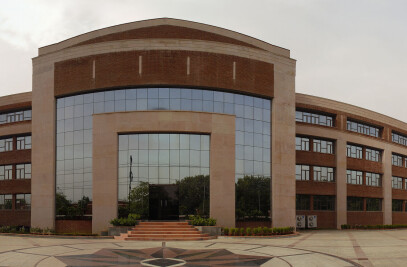Located in Sector 48, Gurugram, the Vedanya School sets a precedent for how architecture can positively influence children's schooling experience. With the intent of designing a school where children are excited to learn, the design initiates a playful environment with diverse opportunities for exploration and activity.

The school has a simple layout with functions on either side of a central atrium. A double-height space at the entrance acts as an outdoor play area, offsetting the lack of a campus-style playground. A central curving corridor, conceptualised as an activity area, allows children to play and move freely. The atrium in the centre visually opens up the vertical spine of the school. Following the curve of the corridor, double-height activity rooms on the upper floors, overlook the atrium through full-length glazing. Placed alternatingly on either side of the atrium, these include a music and movement room, a student's performing area and a spacious library. High ceilings and transparent, curving volumes enable a sense of openness and a boundless learning experience where children don't feel restricted. Designed to maximise movability, these architectural features catalyse interactions between students and instigate self-learning.


Incorporating passive-climate strategies, sustainability is not just an add-on to the building but an integral part of the planning process. The building's south sides have deep recesses and balconies, and service cores are planned on the west to block the harsh sun. The northern side has extensive glazing on all floors bringing in pleasant natural light throughout the day, reducing the need for artificial light. The central atrium, coupled with glazing on the interior walls, ensures that diffused light travels through the deep ends of the building.


With a sharp focus on young children's temperament and explorative nature, the design of Vedanya School is designed for holistic development, invigorating their journey through their early years.










































